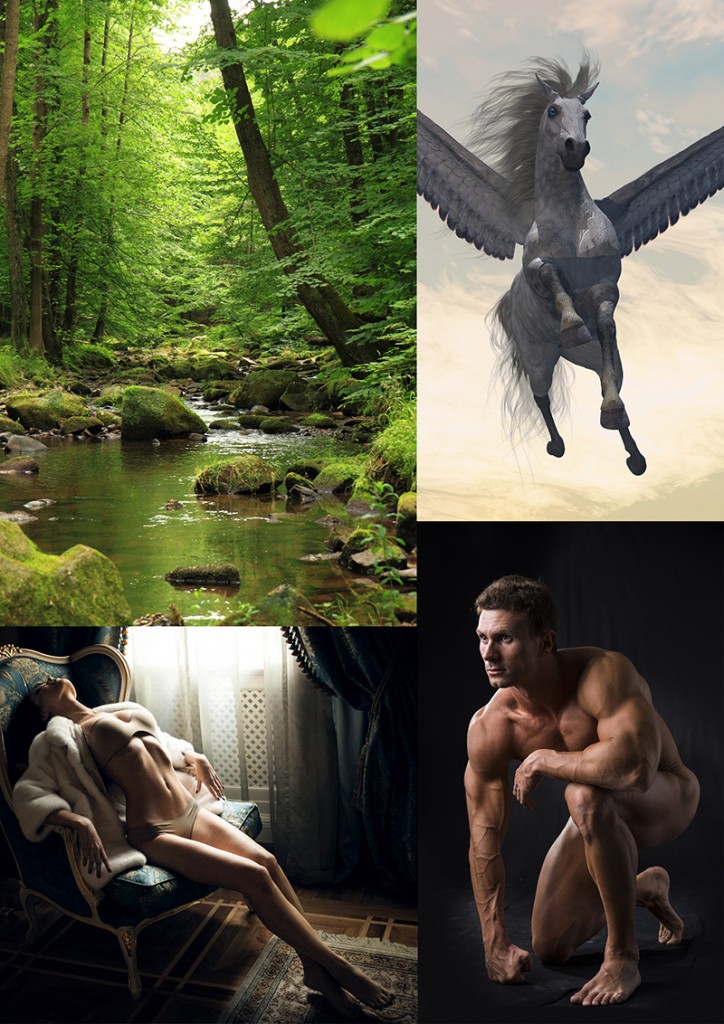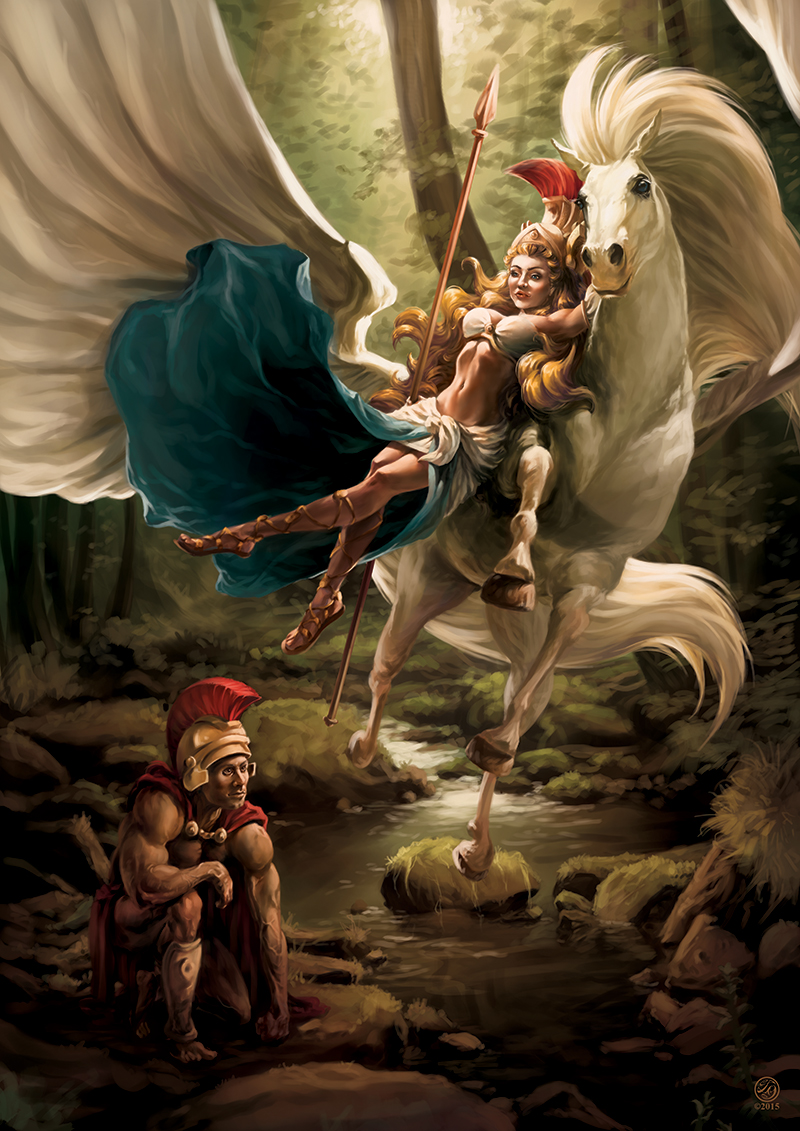Take a sneak peek at this tutorial on adapting traditional painting techniques for digital painting by Catherine Steuer from Issue 119 of 2dartist!
Looking for references
Rubens had strong anatomy skills, and used these greatly in his paintings. His models where mostly fat or muscled, but I decided to go with a slimmer version which is easier for me to paint. As I am not a master in anatomy, I found some nice references which will perfectly fit my project and the story.
I find most of my references on bank images, as they are royalty free and not that expensive. Be careful when looking for references to always know where it comes from and if you have the right to use it. For small references such as fabrics, clothes or small details, I just Google what I need, as it won’t be recognizable at all in the final piece.

References are really important when it comes to painting: even with strong skills, you will always do better with a good model
Preparatory sketching and composition
I start sketching with what I have in mind and the references I have found. This preparatory sketch is to set up the composition and the characters poses, and to see how it turns out in general. I like to put references together on my canvas before starting the sketch, and see how the composition works and if I need to make a few changes: this is the magic of Photoshop!
In this step I decide to change Athena’s head which needs to be visible. I also change the horse position, which needs to be flying but looking at the characters at the same time and not at the end of the canvas. In this case I just flip his head. I sketch with two different layers, one for the characters and one for the background as it is easier for me to change and remove things.

A preparatory sketch from references to see how the composition and characters work together. No need for details, just basic shapes!
The final piece
See how Catherine completes this awesome image in the full tutorial in Issue 119 of 2dartist!

The final piece

